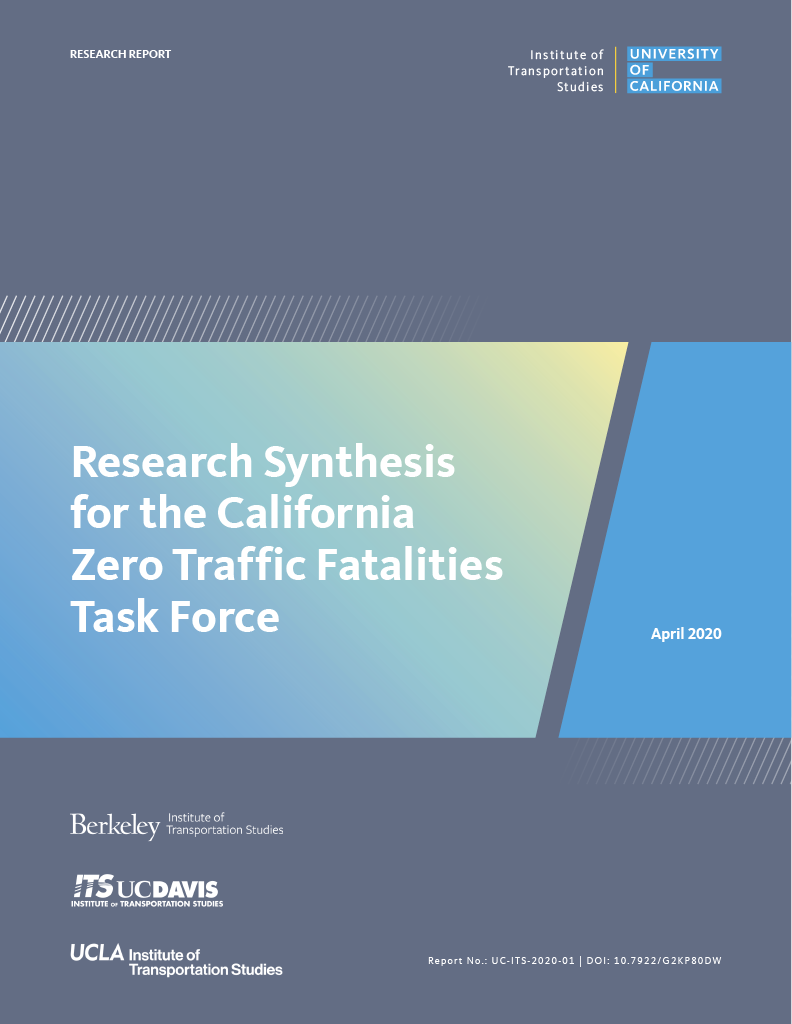Project ID:
LA2085Year Completed:
2020Funding Source:
Statewide Transportation Research ProgramProject Description
Travel in California is dominated by driving, which brings many travelers great benefit, but at very high cost to the environment and society — ubiquitous sprawling development, chronic traffic congestion, high levels of pollutant and greenhouse gas emissions, and a heavy toll of traffic-related deaths and injuries. Over 3,500 people have died on California’s streets and highways each year since 2016, despite commitments at the state, regional, and local levels to reduce this toll.
While much progress has been made in making motor vehicles safer, and efforts to reduce driving while intoxicated have had success as well, a growing number of safety experts have pointed to high speed limits as serious obstacle to increased traffic safety. Safety research has long demonstrated a correlation between speed and the severity of crashes, but as policies that aim to promote alternatives to driving put more pedestrians, cyclists, scooterers, and people walking to and from public transit in the path of motorists, the logic of how speed limits are set is being called into question.
The basic rule for setting motor vehicle speed limits in California, and across the U.S. is the so-called “85th Percentile Rule,” which involves measuring a sample of speeds on a given roadway link and setting the speed limit below the speed traveled by the 15 percent of the fastest speeds measure, and above the 84 percent of the slowest speeds measured. This rule is deeply ingrained, both practically and legally in transportation engineering practice, but is now being scrutinized by those committed to improving traffic safety.
Publications

Brian D. Taylor (PI)
btaylor@ucla.edu
Research Team
Program Area(s):


